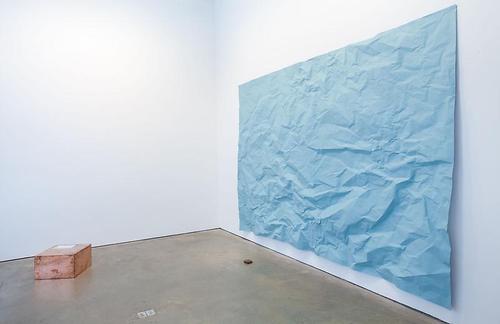
Matthew Higgs is an artist, curator, and writer. He is the director and chief curator of White Columns, New York City’s oldest, alternative not-for-profit art space. In 2012, Higgs curated the outstanding show, Everyday Abstract — Abstract Everyday at James Cohan Gallery. The following transcript is a discussion of the conception, planning, and organization of that show. We spoke at his White Columns office.
—Ross Simonini
THE BELIEVER: What was the germ of this show?
MATTHEW HIGGS: It had really begun just as kind of me sort of observing the way that certain artists were working with found commonplace everyday quotidian materials, yet they were ending up with something that very closely resembled abstract art. So there was a kind of paradox where the materials in the work retained their everydayness, but somehow they were put in the service of something that seemed to be abstract. It seemed to me there’s an interesting paradox to me between the thingness of the object, which was retained, and—you know, this idea that they sort of become something else. It seemed to me to work against perhaps an earlier mid-twentieth century idea of modernism, especially abstract painting, which was the idea—coming from Clement Greenberg—that abstract paintings existed outside of the real world. That they were kind of a world unto themselves. They didn’t have any kind of external stimuli in them—they were sort of in denial of social, economic, psychological realities. It wasn’t the abstract in the sense of the sublime. Like, zen abtraction. It was something quite different. My feeling was that it’s connected to social realities. It’s connected to a shift in the economy. Moving toward—even things like recycling. The idea of discarded materials. The idea of scavenging materials. The idea of repurposing abandoned materials. There seems to be something in the work that connected it to a kind of dysfunctional idea of society.
I wasn’t saying this is a style or a manner of making work. What I was saying is it occurs often enough that it’s more than isolated incidents. It seems to me that this was a methodology that all kinds of people in different circumstances, artists of different ages, have all arrived at independently. And that was sort of the initial motivation.
BLVR: Is this different from say, the Arte Povera movement in Italy?
MH: Yeah Arte Povera, you know obviously it shares some sensibility in that Arte Povera in it’s classical formation is rooted in the everyday, and...
You have reached your article limit
Sign up for a digital subscription and continue reading all new issues, plus our entire archives, for just $1.50/month.
Already a subscriber? Sign in




